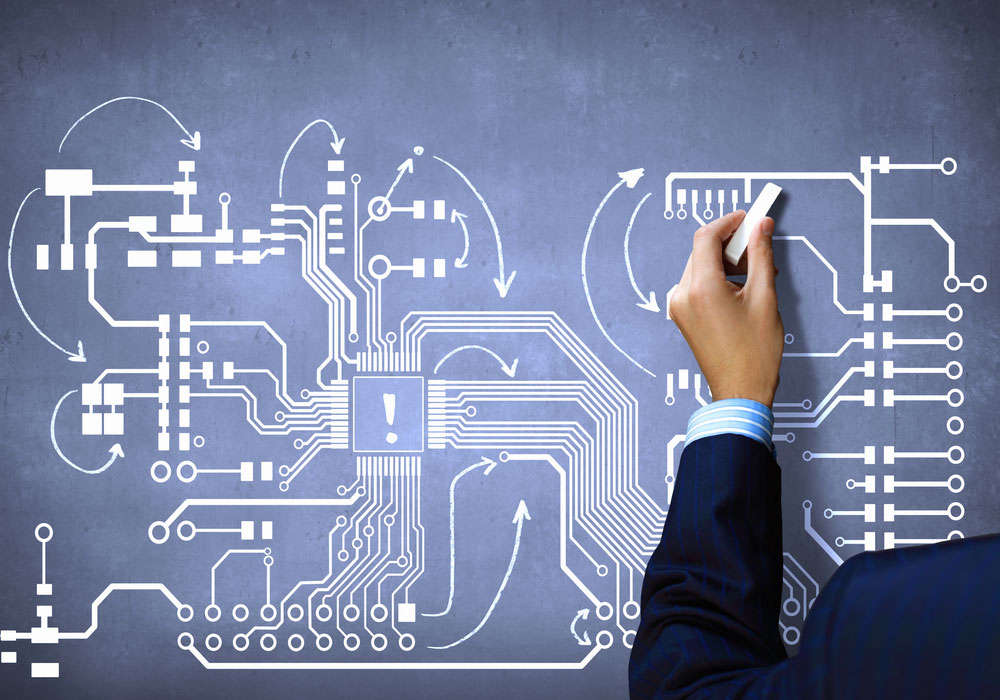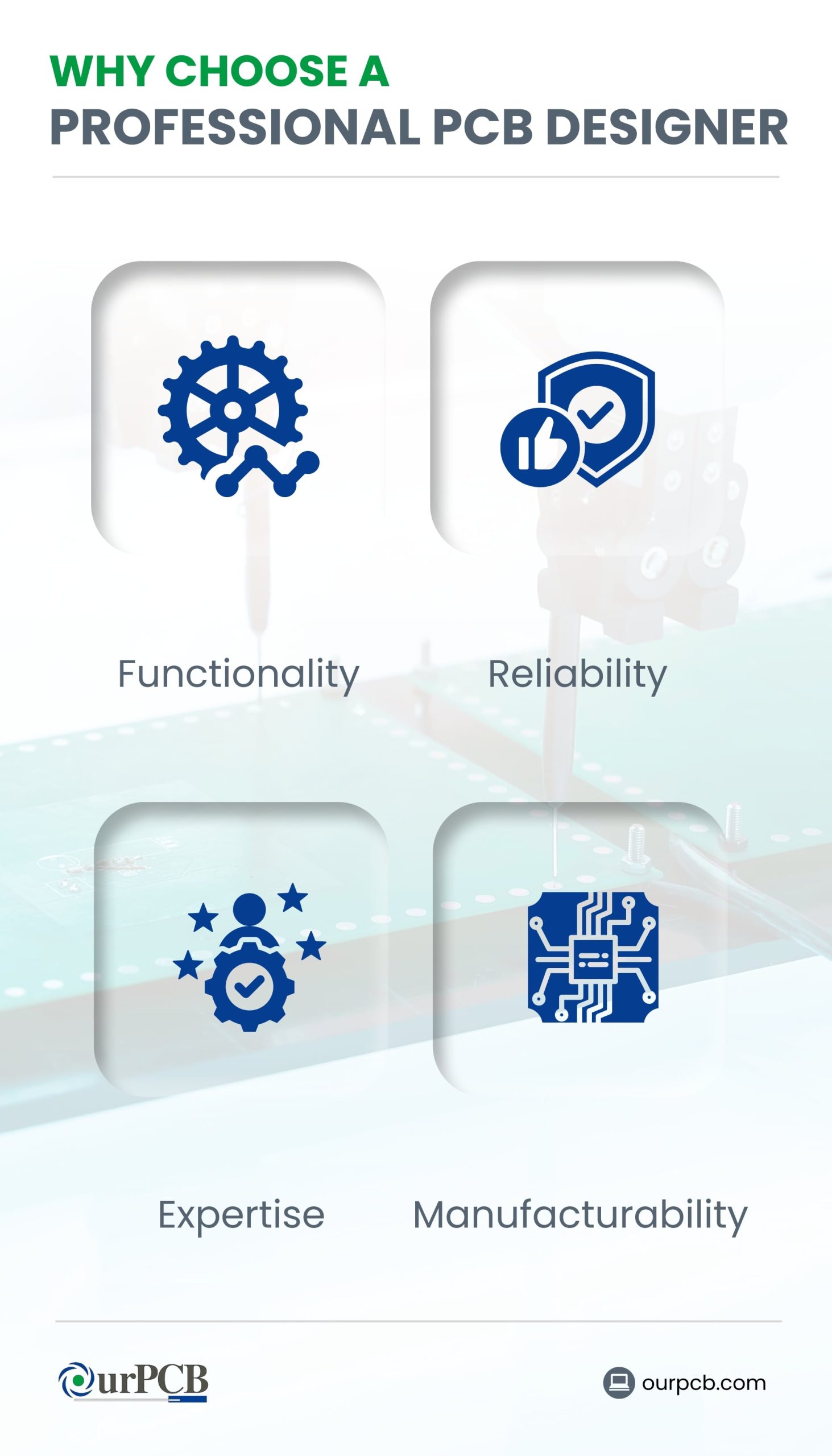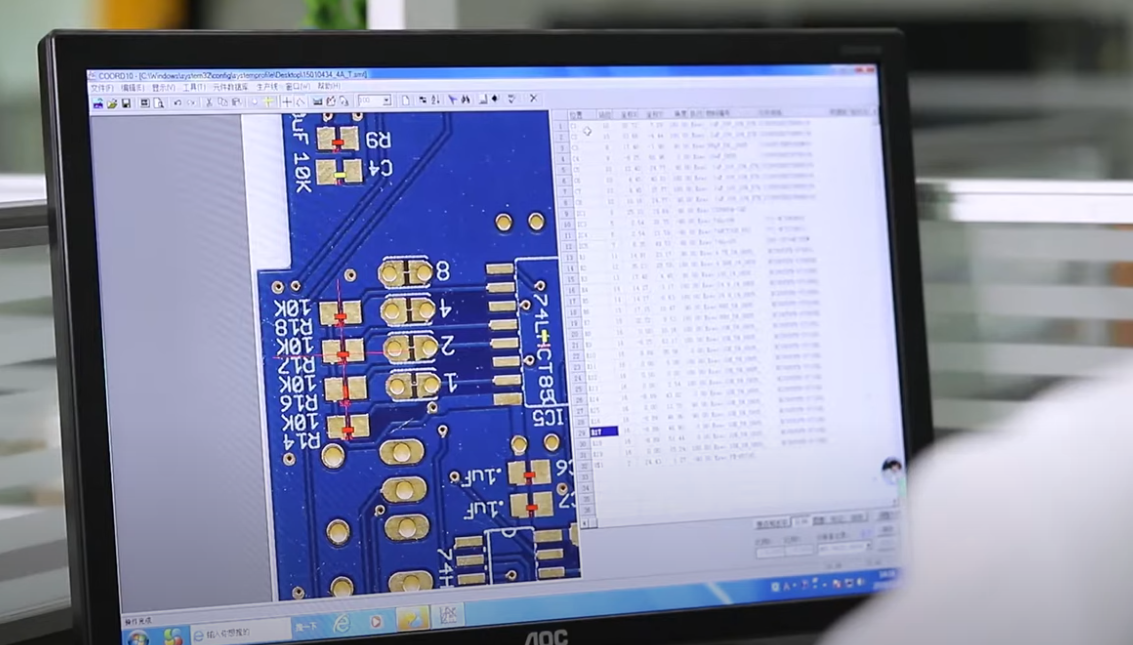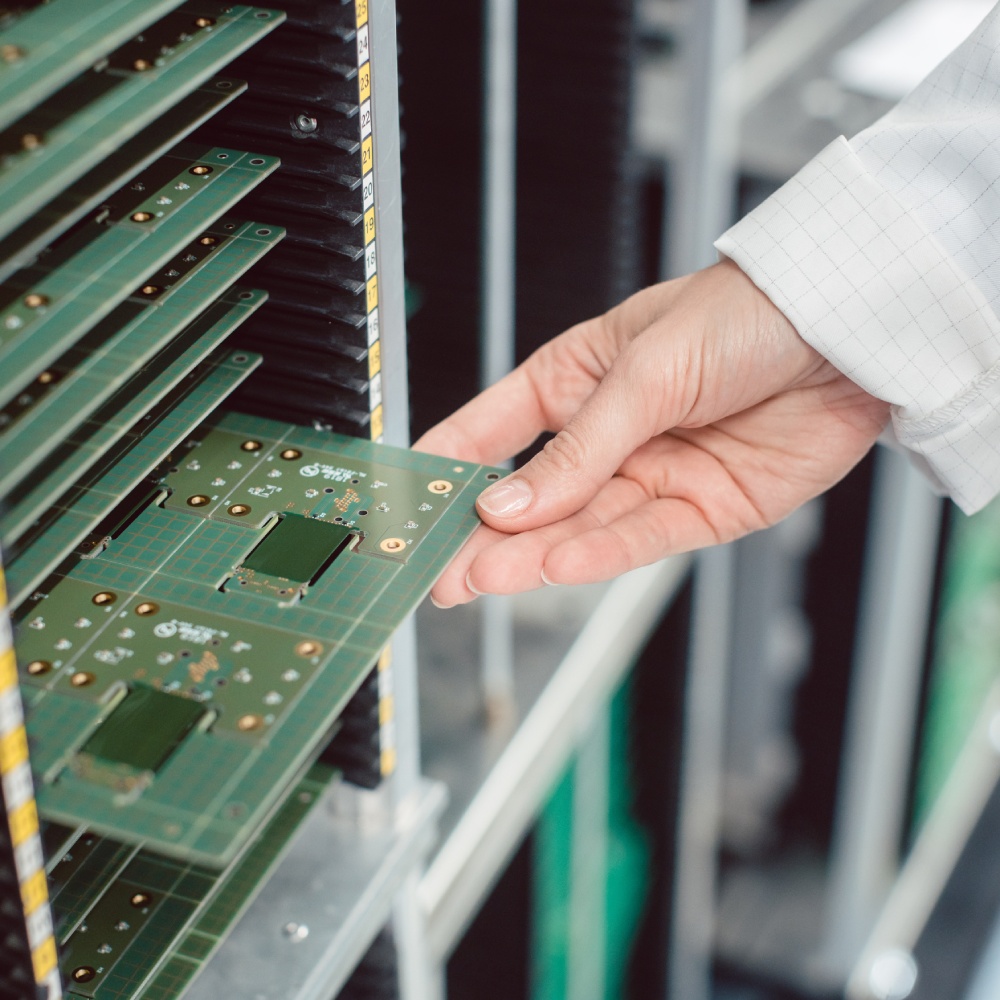- PCB Manufacturer
- PCB Assembly Service
- PCB Assembly Design Services
PCB Design Services and Manufacturing
- PCB design services tailored to your needs, with over 17 years of experience.
- We support various design software, including Altium Designer, KiCad, and Eagle, to ensure high-quality PCB designs.
- Our design process includes careful consideration of layout, component placement, and manufacturing feasibility to optimise performance.











Need PCB Design Services?
Get high-quality PCB design services with OurPCB. We specialize in large-volume PCB fabrication tailored to your needs. Share your cost constraints and functional requirements, and we’ll handle the rest. With over 15 years of experience and satisfied customers worldwide, we ensure expertly designed PCBs. Request an online PCB quote today.
PCB Manufacturing Process







Why Does Professional PCB Design Matter?
While you can use CAD software to draft designs yourself, professional PCB design services matter because they can help you ensure:


PCB design and fabrication service providers such as OurPCB can craft designs that are optimal for the manufacturing process. They can accurately translate schematics into fully functional boards.
Using professional PCB design services grants you access to experienced professionals. This minimizes the risk of errors, faults, and poor designs that are unlikely to perform well in the long run. Moreover, you can hold these professionals accountable if something goes wrong during the design or PCB manufacturing process.
Professional PCB Design services put you in touch with licensed professionals who understand the more specialized technical aspects of PCB design and fabrication. For instance, they can determine the best trace width and spacing to minimize electromagnetic interference (EMI). They can also organize components in a way that fully optimizes electromagnetic compatibility (EMC) and ensures strong signal integrity.
Professional design and fabrication service providers understand all requirements necessary to produce designs that meet manufacturing tolerances and specifications. By using OurPCB for your PCB design needs, you can reduce costs and the risk of reworks.
Why Choose OurPCB PCB Design Services?
OurPCB is an industry leader in PCB fabrication and manufacturing that serves global customers. In addition to our modern fully-kitted-out factories in Shenzhen and Shijiazhuang, we have a branch in Melbourne, Australia that’s dedicated to serving our global English-speaking clientele.
In addition to our design services, we also troubleshoot and provide guidance on pre-established designs. We’ll help audit your schematics, guide you through the layout and routing process, and help you address and overcome any quick turn pcb boards assembly issues you may encounter.
What is the cost of a PCB design?
The average hourly rate for PCB designs ranges from $95 to $145, depending on several factors. But this cost is not cast in stone as it depends on many conditions. These factors include the type of design software used, the number of component pins, the time required for the project, and the routing density of the PCB components. Get a FREE Quote Today



PCB Design Services
Our expert engineers craft precise and detailed schematic diagrams, no matter the complexity of your project.
Leveraging advanced tools such as Altium Designer, Cadence, Eagle, and KiCAD, we produce reliable and efficient PCB layouts tailored to your needs.
We provide end-to-end firmware development services to enhance the functionality of embedded systems seamlessly.
Custom software and app solutions according to your specifications.
We specialize in creating innovative algorithm solutions for a wide range of applications, including image processing and data analysis challenges.
Rapid prototyping and optimized designs with 3D printing and enclosure design expertise.
Millions of business and innovators use OurPCB





PCB Board Process
Order Received
- Component Procurement
- Preparation
- PCB Manufacture
- Make Process Flow
Soldering
- Solder Printing/Wave Soldering
- SMT/Plugging
- Inspection (repair if necessary)
- AOI (repair if necessary)
- Transfer
Parts Assembly
- Manual Assembly
- Cleaning
- Wire Screw
- Inspection
- Repair If Necessary
Finalization
- Final Confirmation
- Packing
- Shiping
Technical Capabilities


Capabilities & Services
- One-stop PCBA Services (PCB Manufacturing + Components Sourcing + Assembly)
- SMT Assembly + THT Assembly, Single/double-sided Assembly Mixed PCB Assembly
- BGA Rework
- 60,000 Chips/Hour
- Down to 01005/0210 Size
- Accuracy<±40μm
- Min. QFN Pin Width/Space: 0.15mm/0.25mm
- Min. BGA Diameter/Space: 0.2mm/0.35mm
- Rigid, Flex, HDI, & High-speed Power Boards
- Up to 50 Layers
- 60GHz High Frequencies
- Min. Trace Width/Spacing: 2.5mil/2.5mil
- AOI, X-ray, ICT & FCT Testing
- Controlled Impedance
- ISO 9001, ISO 13485, ISO 14001, IATF 16949, IPC-A-610, UL Certified
- Automotive, Medical, & Military-grade PCBA Manufacturing

Mon-Fri: 24 hours,
Sat: 9am-6pm, GMT+8

Reach us at
[email protected]
24 hours online

+86-199-30589219
Mon-Fri: 24 hours,
Sat: 9am-6pm, GMT+8
FAQ's
What Factors Influence the Cost of PCB Design?
Factors that influence the cost of PCB design include:
- Board complexity: This includes factors such as the stackup (including number of layers), PCB type, the types and number of components and board density.
- Design constraints: This includes size requirements, edge clearance, trace width and board dimensions.
- Expertise: The credentials and levels of experience of the designer will influence the cost of the design. However, it will also most likely influence its quality and feasibility.
- Timeframe: The longer the design takes to bring into fruition, the greater the costs it will likely accrue. The faster the PCB design can be finalized, the better (in terms of cost).
Why are Design Rule Checks (DRC) Important?
Design rule checks (DRC) are important because they ensure that PCB designs meet established standards and rules. For instance, the IPC-221A contains sections regarding density evaluations and placement requirements.
It’s good practice for technicians and designers to consult these sections when assessing designs. In addition to these rules, manufacturers may have certain constraints and restrictions that are unique to them. For instance, they may only be able to fabricate boards with a limited density or conformal coating thickness. Nevertheless, the main focus of DRCs is evaluating possible clearance, creepage, trace width, and via violations.
Performing a comprehensive DRC ensures that your designs are feasible for the fabrication process. As part of the DRC, designers and manufacturers may implement an electrical rule check (ERC). It evaluates the PCB’s electric design rules by verifying connections and scanning device information.
What are the Key Elements of PCB Design?
- Schematic Capture
Converts a hand-drawn design into a digital schematic for easier editing and processing. Modern PCB design uses software like Altium Designer, KiCad, and Eagle for accuracy and efficiency. - PCB Layout
Determines component placement, trace routing, and board constraints such as thickness, stackup, and drill sizes. Proper layout ensures strong connections, avoids signal interference, and optimizes performance. - Design for Manufacturing (DFM)
Ensures the design is practical and cost-effective for fabrication. Factors like material selection, layer stackup, and spacing impact manufacturability and production costs. - Testing & Iteration
Prototyping and real-world testing help identify design flaws early, refine performance, and prevent costly recalls.


